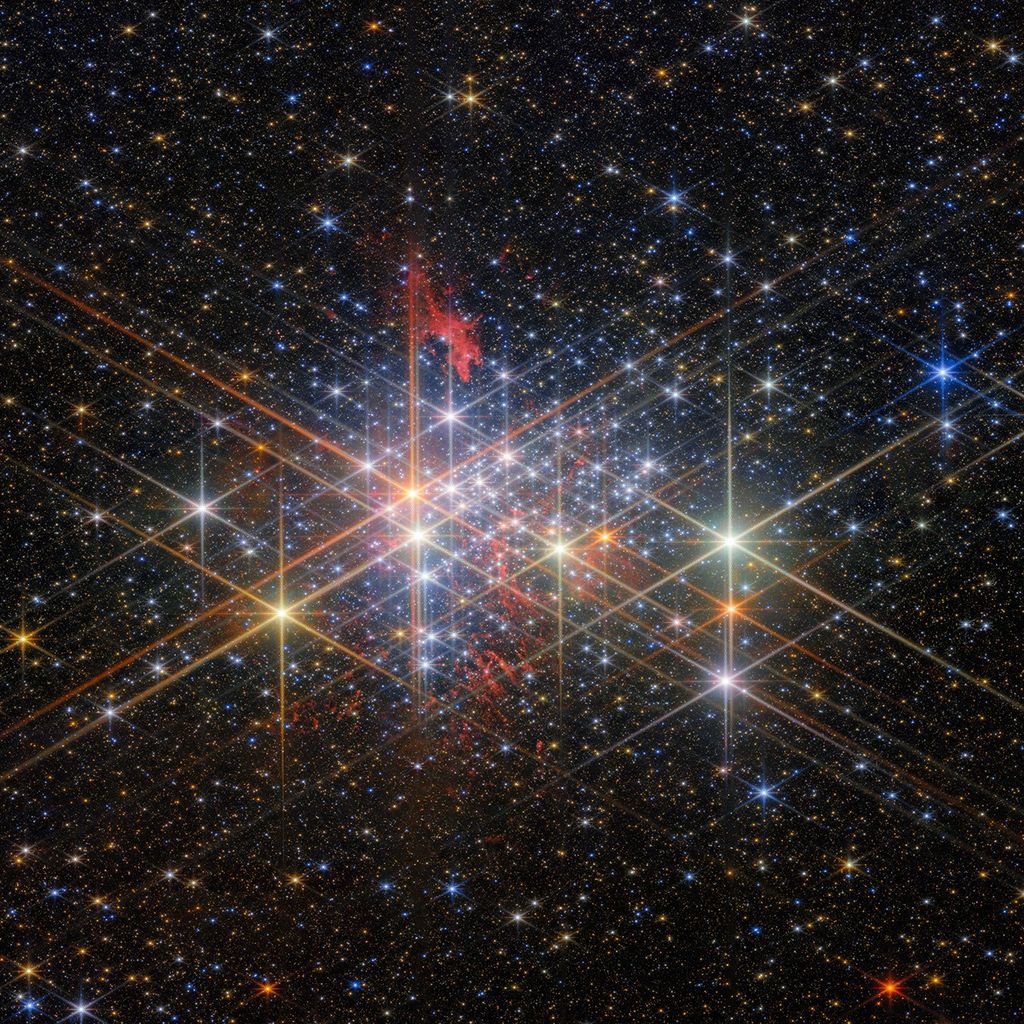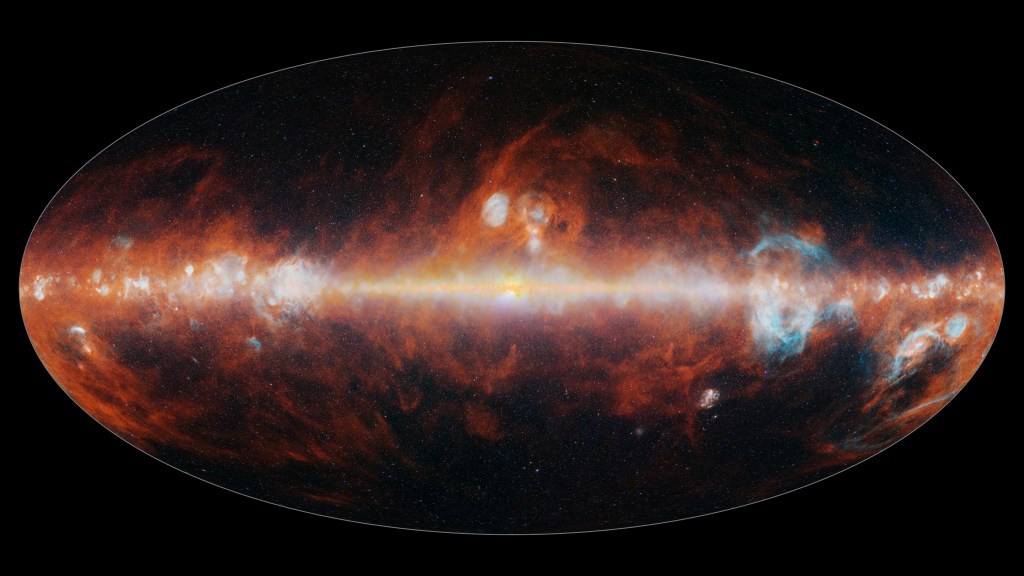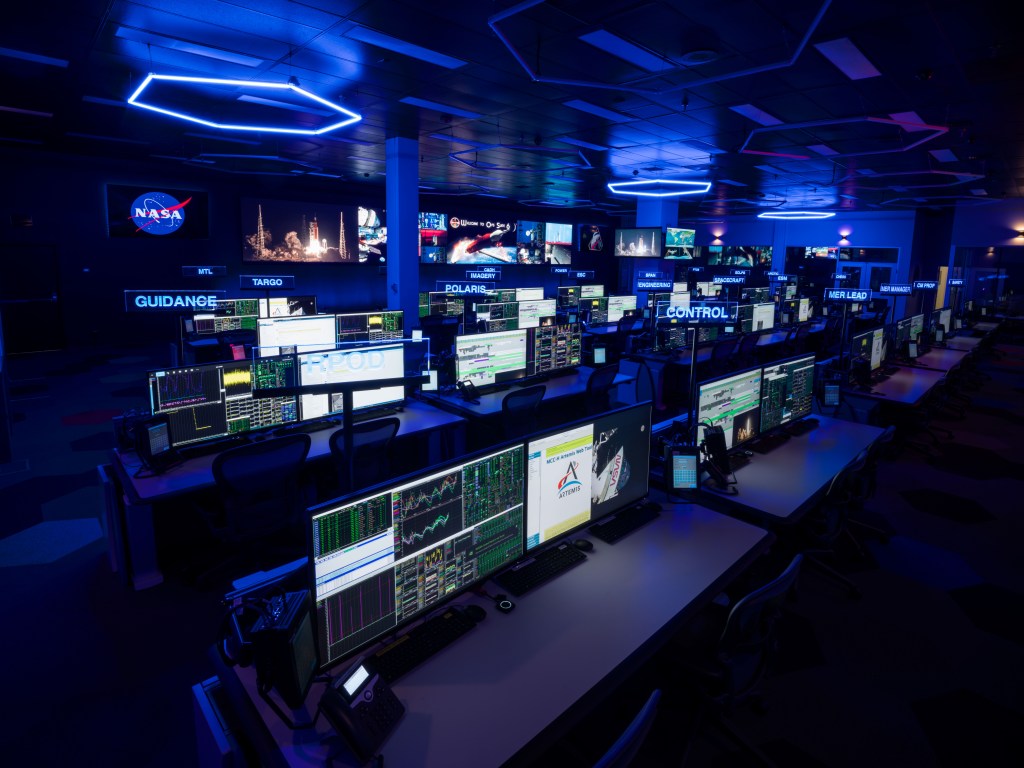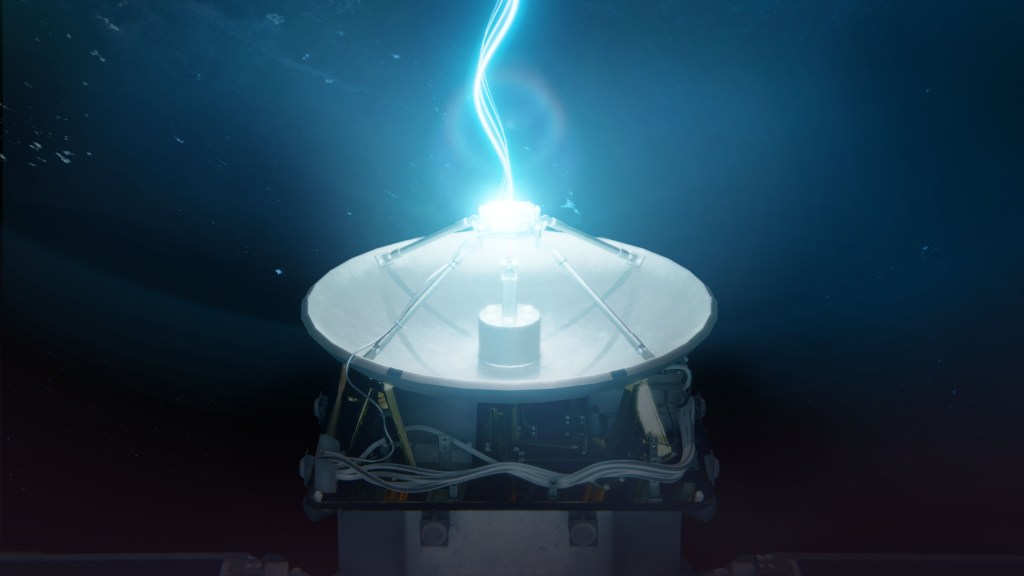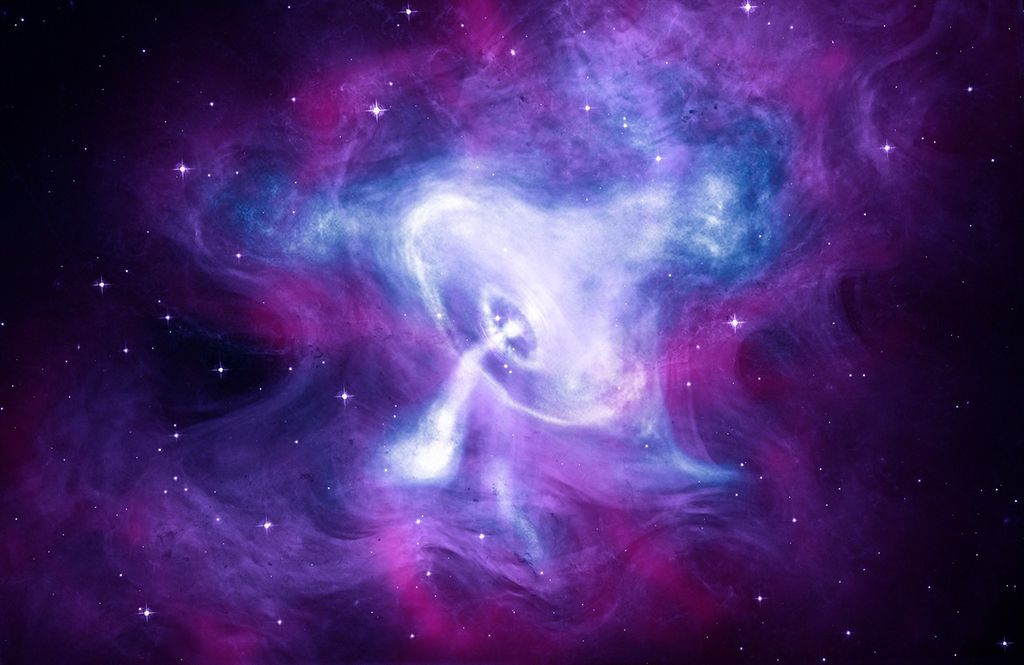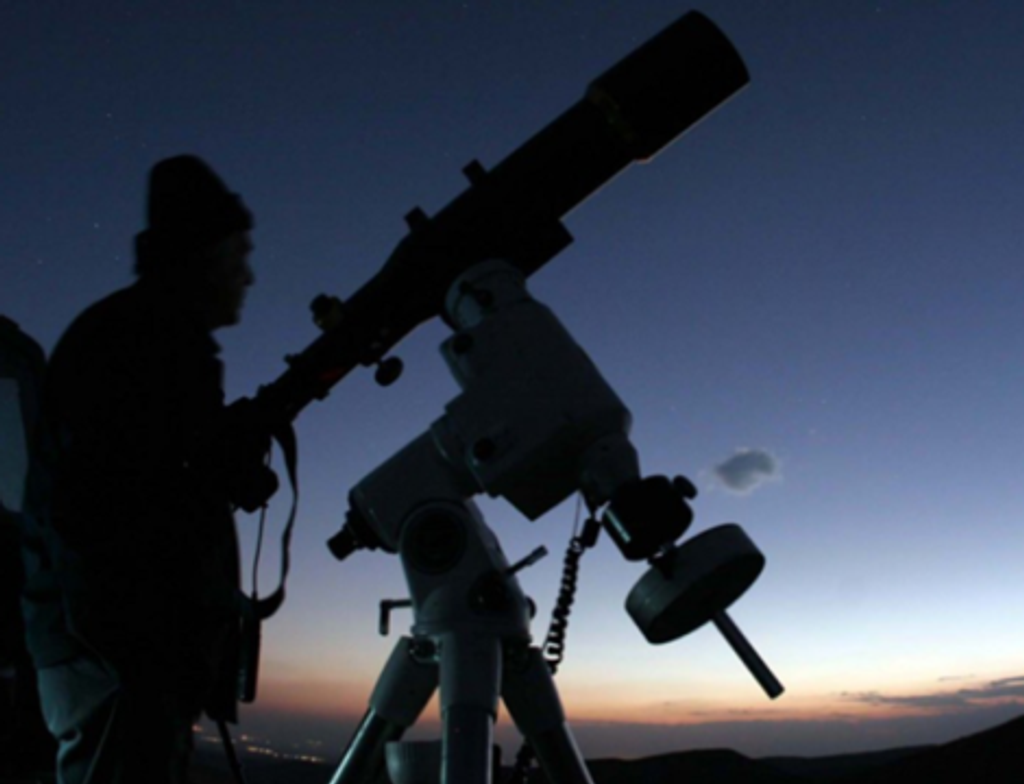1 min read
Hubble Ultra Deep Field
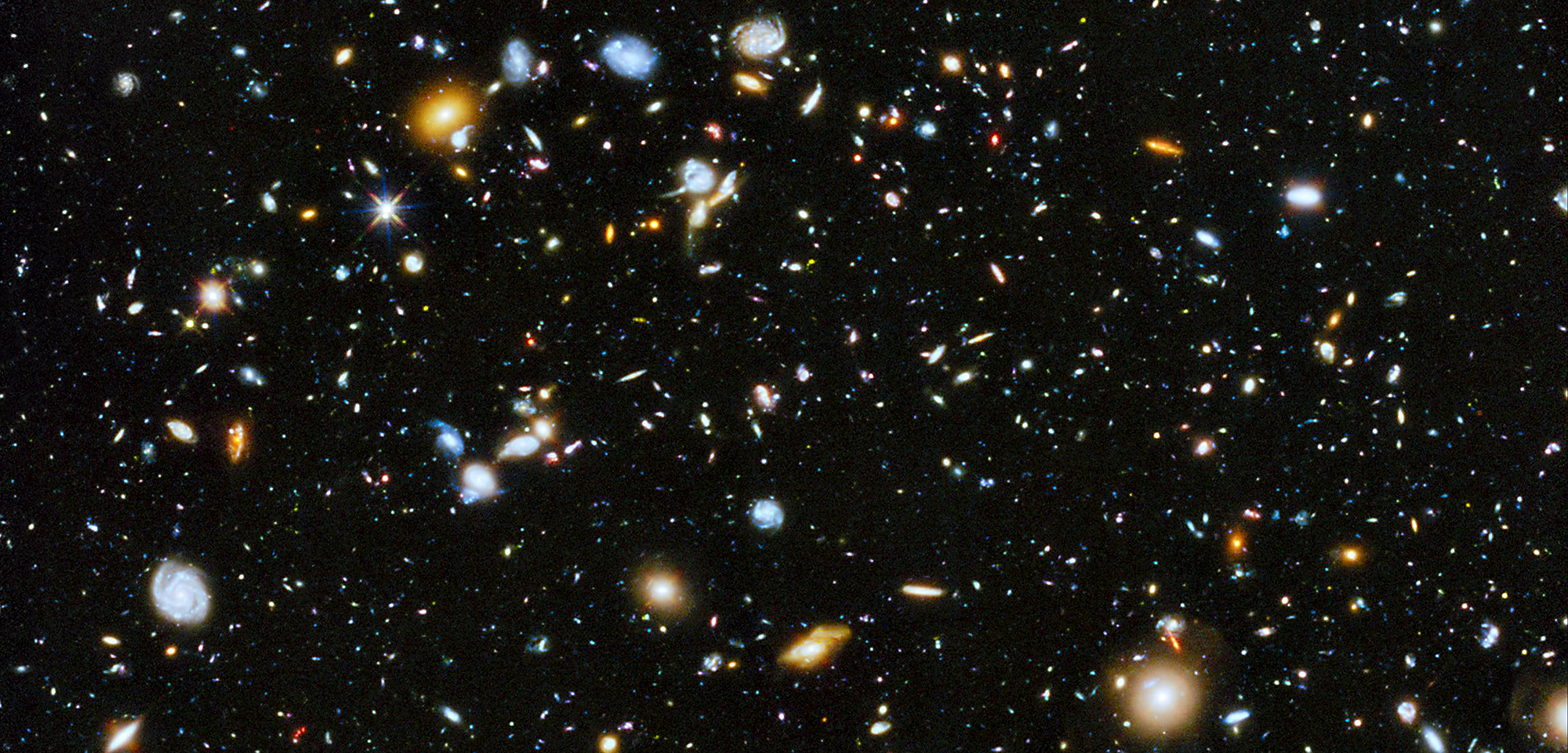
This tiny slice of the universe, speckled with galaxies near and far, tells the story of galaxy evolution over cosmic time. Among the 10,000 or so galaxies pictured here are newborns, adolescents, adults, and retirees. Like looking through a vast collection of family photos, astronomers are poring over this comprehensive image to see how galaxies grew up, matured, and aged.
This portrait of our universe's history is called the Hubble Ultra Deep Field (or HUDF). It is a minuscule patch of sky first targeted by the Hubble Space Telescope in 2002 and revisited over and over again since then. This version of the HUDF is extra special, though. It combines observations of the field taken with Hubble's Advanced Camera for Surveys and the Wide Field Camera 3 from 2002 to 2012, providing one of the farthest views into the universe we've ever seen. Plus, it includes light not just from the visible part of the spectrum but from the (invisible) infrared and ultraviolet ranges, too, giving us different details of the story of how galaxies came to be.
Infrared light lets us see the universe's youngest galaxies. These galaxies lie far, far away from us, and as their light travels across the universe, it gets stretched by the expansion of space. Wavelengths of visible light grow longer, becoming infrared light by the time it reaches us. Combining Hubble's observations of the HUDF in visible and infrared light, a team of astronomers led by Garth Illingworth of the University of California identified more than 5,500 galaxies in a central portion of the field, some so faint that they are just one ten-billionth the brightness of what the human eye can see. Another team, headed by Richard Ellis of the California Institute of Technology (Caltech), used Hubble's infrared observations to find galaxies more than 13 billion light-years away, when the universe was only about 400 million years old — or about three percent of its present age.
Alternatively, to understand slightly older, growing galaxies that are not so far away, observing in ultraviolet light is best. The hottest and youngest stars give off huge amounts of ultraviolet light, making them easy to spot at those wavelengths of light. Most recently, a team of astronomers led by Harry Teplitz of Caltech used the ultraviolet-sensing abilities of Hubble's Wide Field Camera 3 to add the ultraviolet piece to this view of the HUDF. With this part of the galaxy evolution picture in hand, astronomers are investigating how galaxies grew through bursts of star formation and exactly where, when, and how many stars formed over time.
Because our atmosphere blocks or absorbs most infrared and ultraviolet light that reaches Earth, only a telescope in space, like Hubble, can provide such insights into the history of galaxies. Without both infrared and ultraviolet light, the tale is incomplete.
Exposure credits:
- 2004 HUDF IMAGE – NASA, ESA, S. Beckwith, M. Stiavelli, A. Koekemoer (STScI), R. Thompson (University of Arizona), and the STScI HUDF Team
- 2009 HUDF IMAGE – NASA, ESA, G. Illingworth, R. Bouwens (University of California, Santa Cruz), and the HUDF09 Team
- 2012 HUDF IMAGE – NASA, ESA, R. Ellis (Caltech), R. McLure, J. Dunlop (University of Edinburgh), B. Robertson (University of Arizona), A. Koekemoer (STScI), and the HUDF12 Team
- 2012 XDF IMAGE – NASA, ESA, G. Illingworth, D. Magee, P. Oesch (University of California, Santa Cruz), R. Bouwens (Leiden University), and the HUDF09 Team
- 2014 HUDF / UV-UDF IMAGE – NASA, ESA, H. Teplitz, M. Rafelski (IPAC/Caltech), A. Koekemoer (STScI), R. Windhorst (Arizona State University), and Z. Levay (STScI)
About the Object
- R.A. PositionR.A. PositionRight ascension – analogous to longitude – is one component of an object's position.03h 32m 38.99s
- Dec. PositionDec. PositionDeclination – analogous to latitude – is one component of an object's position.-27° 47' 29.04"
- ConstellationConstellationOne of 88 recognized regions of the celestial sphere in which the object appears.Fornax
- DistanceDistanceThe physical distance from Earth to the astronomical object. Distances within our solar system are usually measured in Astronomical Units (AU). Distances between stars are usually measured in light-years. Interstellar distances can also be measured in parsecs.13.2 billion light-years
About the Data
- Data DescriptionData DescriptionProposal: A description of the observations, their scientific justification, and the links to the data available in the science archive.
Science Team: The astronomers who planned the observations and analyzed the data. "PI" refers to the Principal Investigator.The image was created from Hubble data from the following proposals: 9352, 10189, 10340, 12099: A. Riess (STScI/JHU); 9425: M. Giavalisco (University of Massachusetts); 9488: K. Ratnatunga (Carnegie Mellon University); 9575: W. Sparks (STScI); 9793, 10530: S. Malhotra (Arizona State University); 9978, 10086: S. Beckwith (STScI); 10403: H. Teplitz (Caltech); 10258: C. Kretchmer (JHU); 11359: R. O'Connell (University of Virginia); 11563: G. Illingworth (University of California, Santa Cruz); 12060, 12061, 12062: S. Faber (University of California, Santa Cruz) and H. Ferguson (STScI); 12177: P. van Dokkum (Yale University); 12498: R. Ellis (Caltech); and 12534: H. Teplitz (Caltech).
THE SCIENCE TEAM: H. Teplitz and M. Rafelski (IPAC/Caltech), P. Kurczynski (Rutgers University), N. Bond (NASA/Goddard Space Flight Center), E. Soto (Catholic University), N. Grogin and A. Koekemoer (STScI), H. Atek (École Polytechnique Fédérale de Lausanne, Switzerland), T. Brown and D. Coe (STScI), J. Colbert and Y. Dai (IPAC/Caltech), H. Ferguson (STScI), S. Finkelstein (University of Texas, Austin), J. Gardner (Goddard Space Flight Center), E. Gawiser (Rutgers University), M. Giavalisco (University of Massachusetts, Amherst), C. Gronwall (Penn State University), D. Hanish (IPAC/Caltech), K.-S. Lee (Purdue University), Z. Levay (STScI), D. De Mello (Catholic University), S. Ravindranath and R. Ryan (STScI), B. Siana (University of California, Riverside), C. Scarlata (University of Minnesota, Minneapolis), E. Voyer (CNRS, Marseille), and R. Windhorst (Arizona State University).
- InstrumentInstrumentThe science instrument used to produce the data.Advanced Camera for Surveys/WFC and /SBC, and Wide Field Camera 3/IR and /UVIS
- Exposure DatesExposure DatesThe date(s) that the telescope made its observations and the total exposure time.July 2002 – September 2012, Exposure Time: ~600 hours
- FiltersFiltersThe camera filters that were used in the science observations.ACS/SBC: F150LP; WFC3/UVIS: F225W (U), F275W (U), F336W (U); ACS/WFC: F435W (B), F606W (V), F775W (I), F814W (I), F850LP (z); WFC3/IR: F105W (Y), F125W (J), F140W (JH), F160W (H)
- Object NameObject NameA name or catalog number that astronomers use to identify an astronomical object.Hubble Ultra Deep Field 2014 (HUDF 2014)
- Object DescriptionObject DescriptionThe type of astronomical object.Ultraviolet, Optical, and Infrared Survey
- Release DateJune 3, 2014
- CreditImage: NASA, ESA, H. Teplitz (Caltech/IPAC, Caltech), M. Rafelski (Caltech/IPAC, Caltech), Anton Koekemoer (STScI), Rogier Windhorst (ASU), Zoltan Levay (STScI)

This image is a composite of separate exposures acquired by the ACS/SBC, ACS/WFC, WFC3/UVIS and WFC3/IR instruments. Several filters were used to sample various wavelengths. The color results from assigning different hues (colors) to each monochromatic (grayscale) image from the 13 different filters used by the four instruments grouped as follows: Blue: ACS/SBC F150LP, WFC3/UVIS F225W (U) + F275W (U) + F336W (U), ACS/WFC F435W (B) + F606W (V) + Green: ACS/WFCF775W (I) + F814W (I) + F850LP (z), WFC3/IR F105W (Y) Red: WFC3/IR F125W (J) + F140W (JH) + F160W (H)
Share
Details
Claire Andreoli
NASA’s Goddard Space Flight Center
Greenbelt, Maryland
claire.andreoli@nasa.gov
NASA, ESA, H. Teplitz (Caltech/IPAC, Caltech), M. Rafelski (Caltech/IPAC, Caltech), Anton Koekemoer (STScI), Rogier Windhorst (ASU), Zoltan Levay (STScI)


